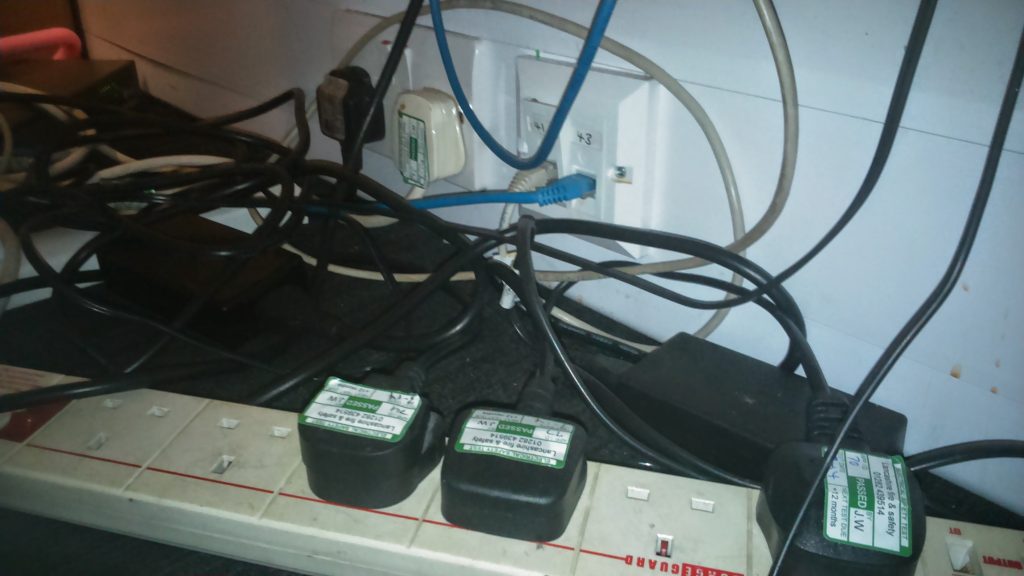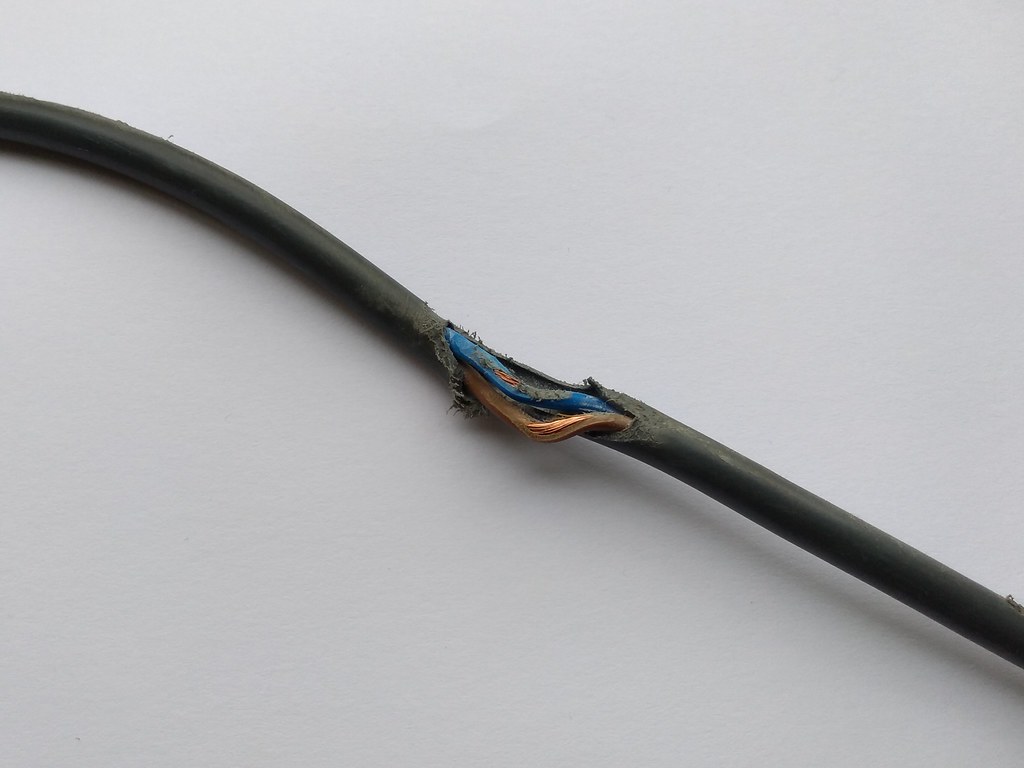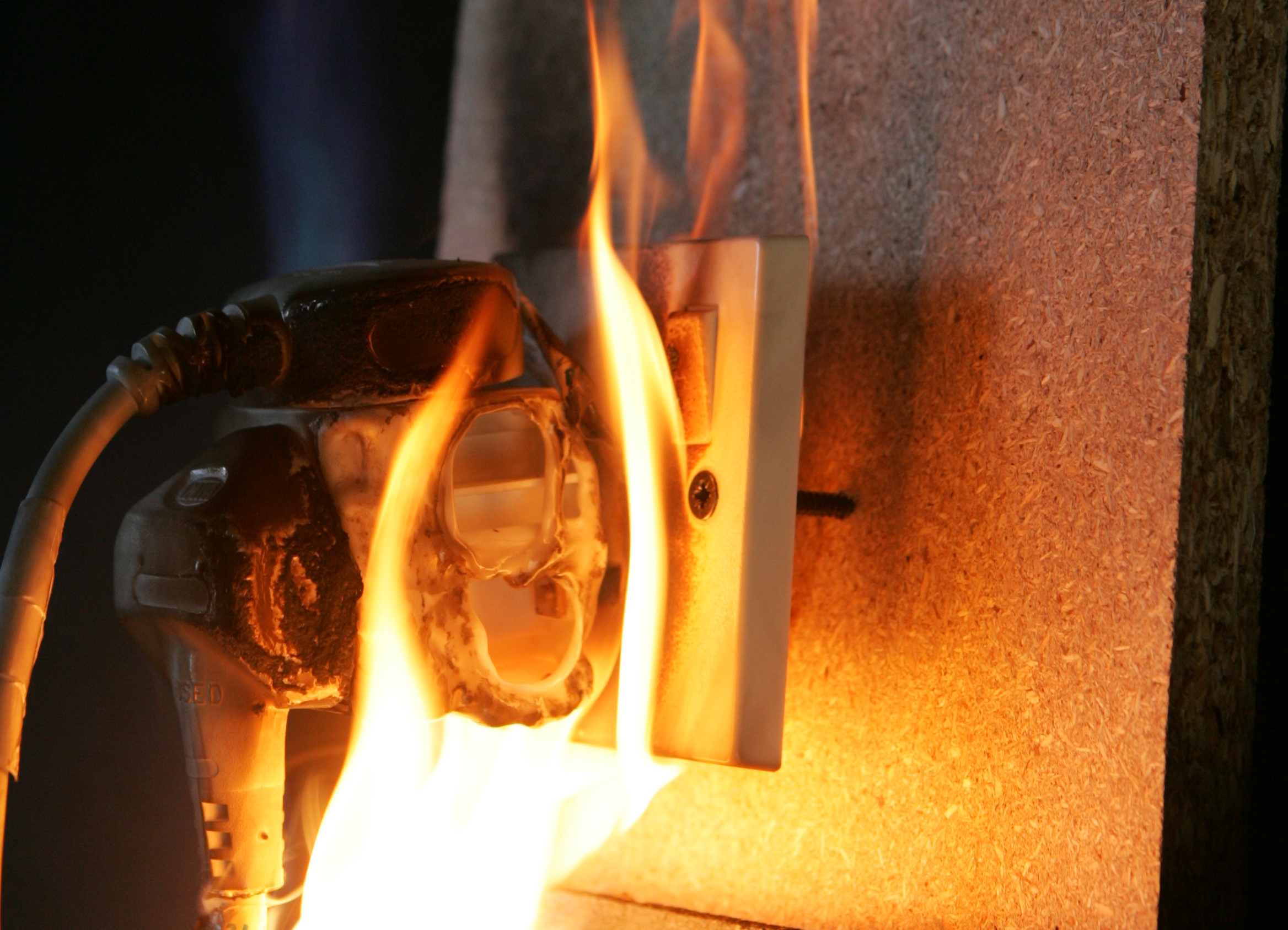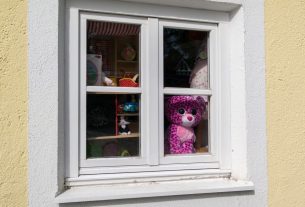According to recent reports, electrical fires account for around 6.3% of all residential fires, with over 20,000 fires reported each year. In this article, we will outline the main causes of electrical fires, and what can be done to prevent them.

The Causes:
1: Faulty outlets, appliances. Most electrical fires are caused by faulty electrical outlets and old, outdated appliances. Other fires are started by faults in appliance cords, receptacles and switches. Never use an appliance with a worn or frayed cord that can send heat onto combustible surfaces like floors, curtains, and rugs that can start a fire. Running cords under rugs is another cause of electrical fires. Removing the grounding plug from a cord so it can be used in a two-prong electrical outlet can also cause a fire. The reason appliances have the extra prong is so they can be only used in outlets that can handle the extra amount of electricity that these appliances draw.
2: Light fixtures. Light fixtures, lamps and light bulbs are another common reason for electrical fires. Installing a bulb with a wattage that is too high for the lamps and light fixtures is a leading cause of electrical fires. Another cause of fire is placing materials like cloth or paper over a lampshade. The material heats up and ignites, causing a fire. Faulty lamps and light fixtures also frequently result in fires.
3: Extension cords. Misuse of extension cords is another electrical fire cause. Appliances should be plugged directly into an outlet and not plugged into an extension cord for any length of time. Only use extension cords as a temporary measure. If you do not have the appropriate type of outlets for your appliances, consider hiring an electrician to install new ones.
4: Space heaters. Because these types of heaters are portable, many times people put them too close to combustible surfaces such as curtains, beds, clothing, chairs, couches and rugs. Coil space heaters are especially dangerous in this regard because the coils become so hot they will almost instantaneously ignite any nearby flammable surface.
5: Old or Faulty Wiring. Outdated wiring often causes electrical fires. If a home is over 20 years old, it may not have the wiring capacity to handle the increased amounts of electrical appliances in today’s average home, such as computers, wide-screen televisions, video and gaming players, microwaves and air conditioners. Breakers should be triggered when circuits get overloaded by too much electricity, but outdated breaker boxes often have worn connectors that do not work, causing the system to overload and start an electrical fire.
As you can see, electrical fires can do some serious damage to your home and put your family’s safety at risk. The good news is electrical fires are often preventable. Here are a few things you can do around your home to help prevent an electrical fire:

- Keep heat-producing appliances unplugged when not in use. When heat-generating appliances malfunction or are accidentally left on for an extended period of time, they can overheat and catch on fire. It’s safest to unplug kettles, curling wands, toasters, irons, and other “hot” appliances when you’re not using them.
- Only use extension cords temporarily. Extension cords should be used as temporary solutions only. If you need additional permanent power sources installed in your home, contact a qualified electrician.
- Never cut off the third prong on a power cord. The third prong (also known as the “ground”) is there for a reason: to protect you in the event of a power surge or other electrical malfunction. If your home only has two-prong outlets, consider having an electrician inspect your home’s electrical system to see if they can update your outlets to three-prong ones.
- Update your home’s electrical system. Knob-and-tube wiring, aluminum wiring, and 60-amp electrical systems (commonly found in older homes) tend to come with a greater risk of overheating. Consider upgrading to an electrical system that uses modern wiring materials (like copper, for example) and has at least 100 amps to reduce your chances of an electrical fire.
- Don’t plug in devices with damaged power cords. If you notice that a power cord is cracked, frayed, or has come loose from its plug, you should have it repaired before plugging it in again.
- Follow the directions that come with your appliances. Instruction manuals for appliances like microwaves and toasters rarely make it out of their boxes, but it’s a good idea to read the directions for new appliances and take note of any warnings or directions that could help prevent an electrical malfunction.
- Don’t ignore signs of trouble. The following signs may indicate that one of your appliances is overheating or that there is a problem with an electrical socket:
- Burn marks or discoloration around a socket, light switch, or light fixture
- An appliance, an outlet, or a power cord feels hot to the touch
- A burning smell when an item is plugged in or in use
- Electrical sparks each time you plug in a device
- You feel an electrical shock each time you plug in a device
- A light fixture flickers even after you have replaced the bulb
- One (or all) of your breakers frequently trip or your fuses regularly blow
If you notice one or more of these signs, stop using the outlet or device in question and contact an electrician right away. You’ll be thankful that you did.



